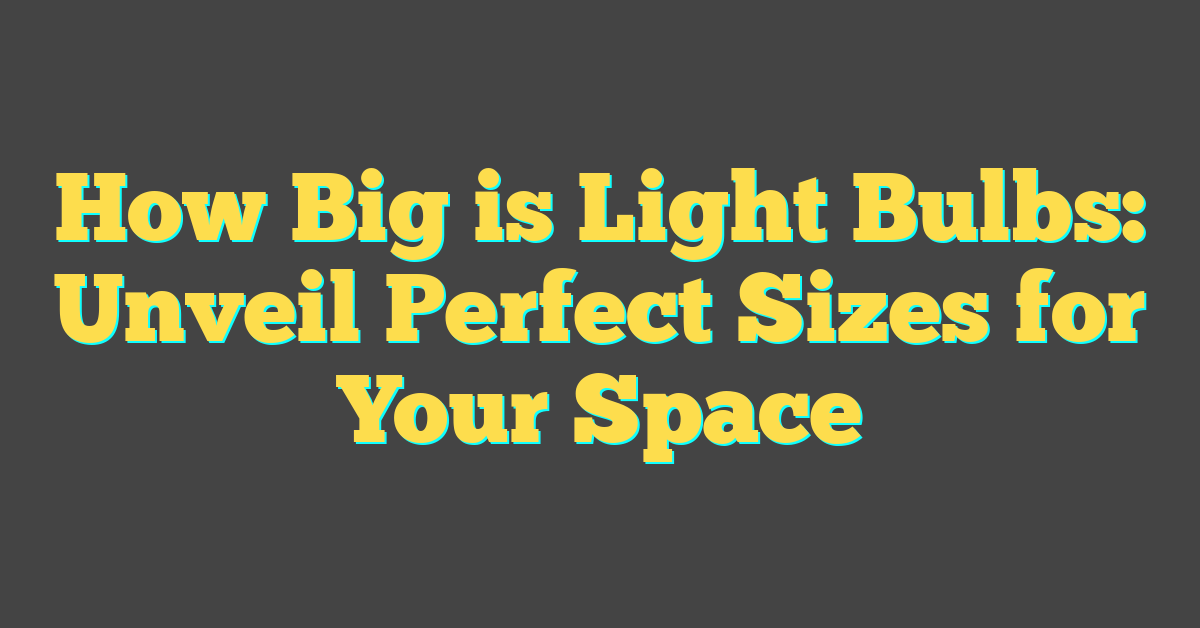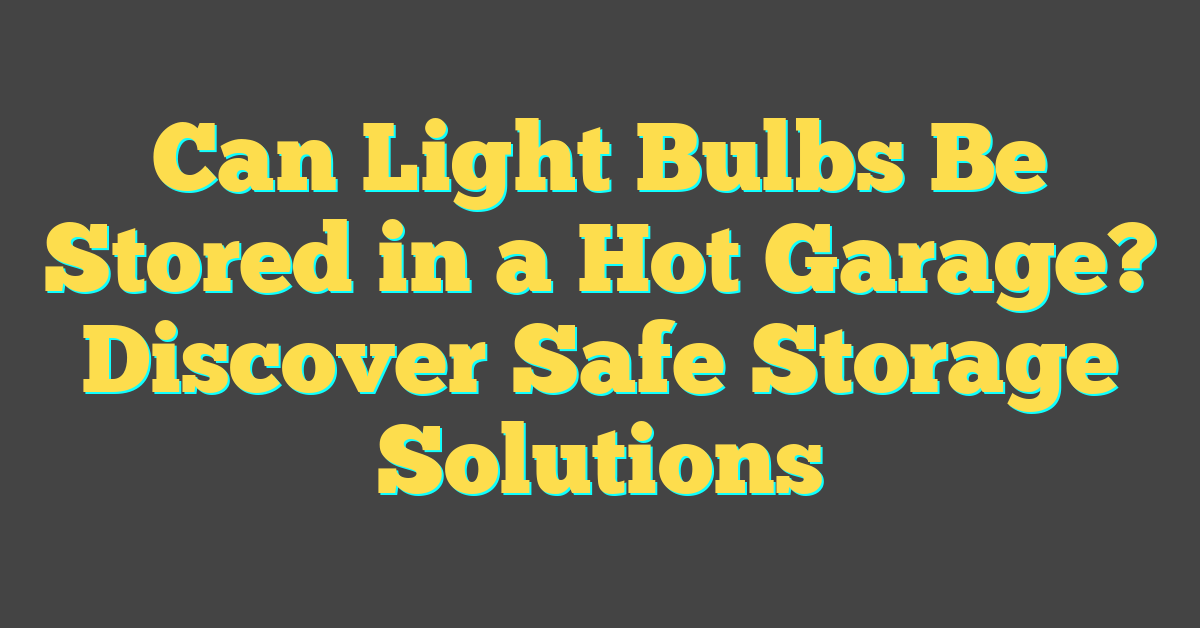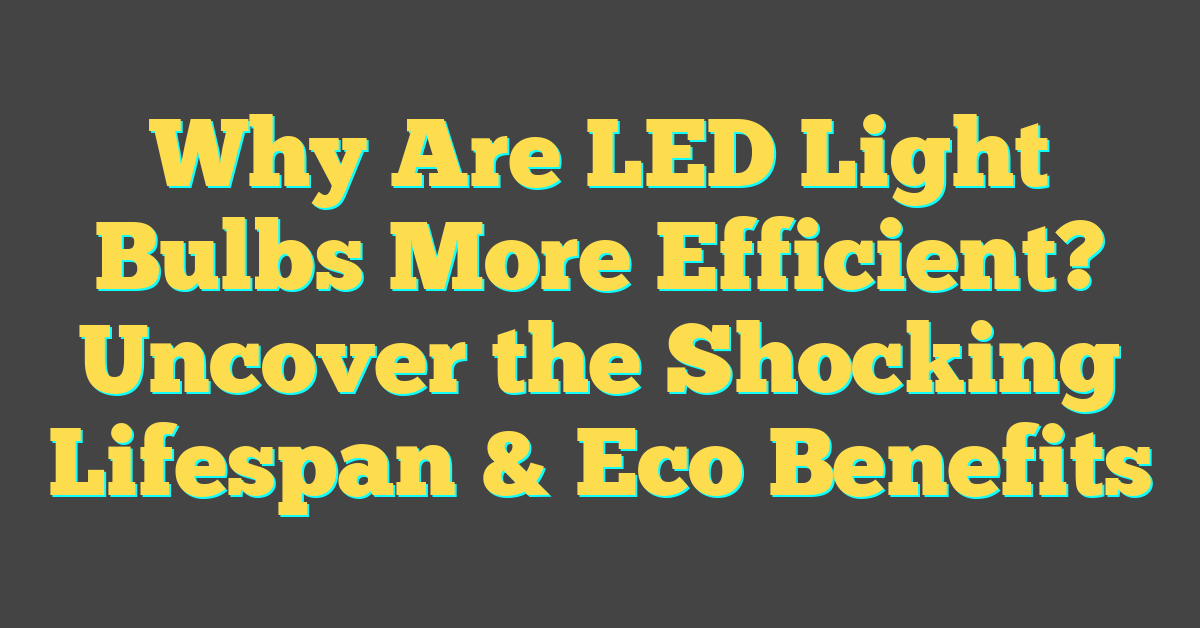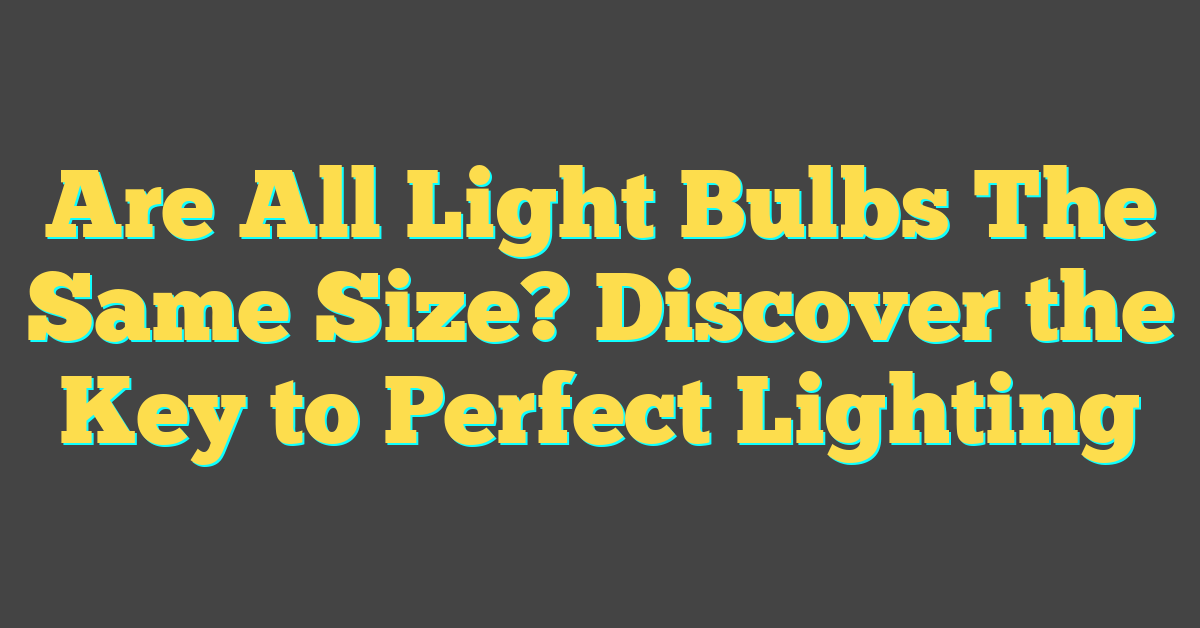Ever wondered what keeps your light bulbs steady and secure? That’s the job of a light bulb holder, the unsung hero in lighting up your space. It’s not just a practical piece; it’s the electrical heart connecting your bulb to the power source.
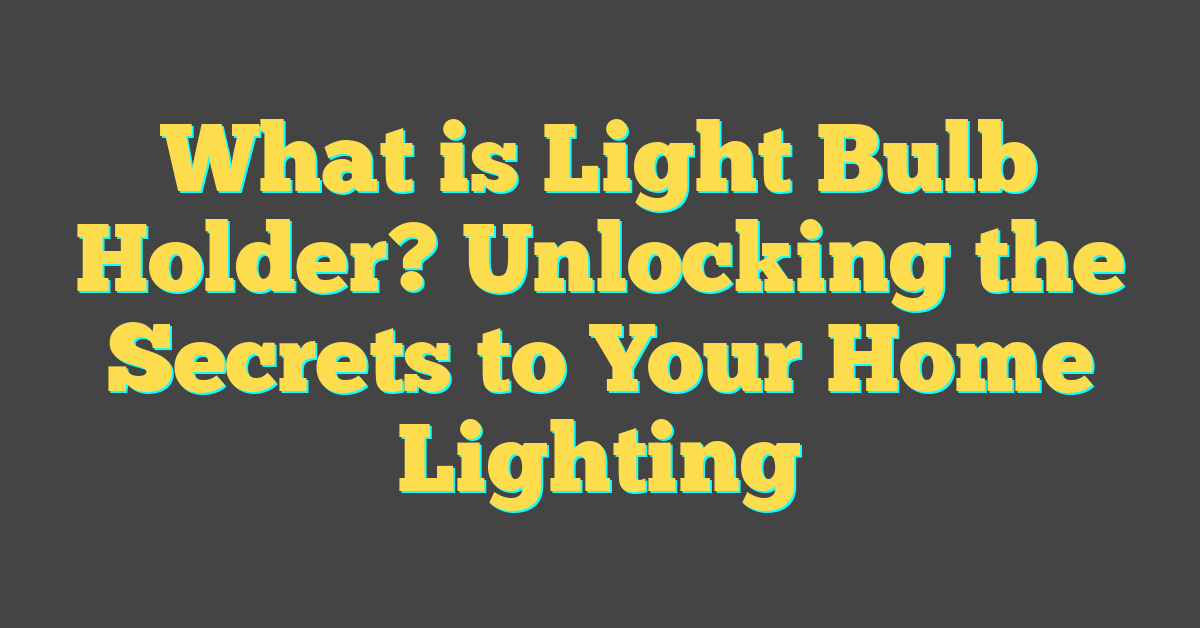
Choosing the right holder is crucial for both safety and style. From the simple screw type to the bayonet connection, your light bulb holder is more than a socket—it’s a blend of function and aesthetics. Let’s shed some light on the importance of this essential fixture and how it impacts your daily life.
Importance of a Light Bulb Holder
When delving into the world of home lighting, you’ll quickly realize that the light bulb holder is far more than a practical necessity. Think of it as the unsung hero in your room’s lighting setup. Without it, even the most energy-efficient bulb is nothing but a glass ornament. It provides the connection needed for the bulb to come to life—illuminating spaces and creating ambience.
But let’s talk safety. A holder that’s sub-standard or improperly installed can lead to electrical hazards. It’s the safeguard between the electrical wiring and the bulb’s energy demands. Choosing a holder that’s compatible with your bulb type and power configuration is essential to avoid short circuits or overheating, which could potentially lead to fires.
Here’s where your inner DIY enthusiast smiles. If you’re looking to revamp your space, lighting is often the starting point. The holder you choose can significantly impact the room’s aesthetic. Picking the perfect holder means merging style with functionality. From sleek modern designs to rustic or vintage fittings, the holder sets the stage for your light bulb to shine in more ways than one.
As a lighting and DIY expert, you know that attention to detail is key. Imagine installing a beautifully designed pendant lamp—your holder choice determines the fixture’s overall stability. With a variety of materials available, such as ceramic, metal, plastic, or even wooden holders, your project’s durability and finish rest on this crucial component.
- Always check the holder’s maximum wattage rating.
- Ensure compatibility with your chosen bulb type (LED, CFL, halogen, etc.).
- Select holders based on the desired location (indoor, outdoor, wet areas).
Pairing the right holder with the right bulb not only complements your home’s decor but also ensures the efficient and safe operation of your lighting. Whether you’re planning a simple replacement or a full-scale redesign, consider the holder as much a part of your lighting decisions as the bulbs you so carefully choose.
Common Types of Light Bulb Holders

When you’re diving into the world of light bulb holders, you’ll find there’s a variety to choose from, each with its own unique features. Let’s look at a few common types that you might encounter in your quest for the perfect lighting ambiance.
Edison Screw Holders are by far the most prevalent and are famous for their straightforward design. They come in different sizes, denoted by an “E” followed by a number which corresponds to the diameter of the base in millimeters. For instance, the E27 holder, also known as a medium or standard base, is one of the most commonly used in household lighting fixtures.
Bayonet Cap Holders have a push-and-twist action, making them very secure once the bulb is in place. They’re distinguished by their “B” designation, and like the Edison screw, the number following it indicates the size of the base. The B22 holder is a typical size you might find in many homes.
Pin-Type Holders such as the GU10 and MR16 bases are designed for spotlights and certain types of downlights. These holders use two pins to secure the bulb in place. The spacing of the pins varies, with the GU10 being notable for its thicker pins set 10mm apart.
Fluorescent Tube Holders might not be what you first envision when thinking of light bulb holders, but they’re crucial for tube lighting. These holders snap or slide the tube in place and often have a starter and ballast integrated into the fixture for the fluorescent light to function.
Specialty Holders like the G4 and G9 cater to specific bulb types used in certain decorative fixtures, such as under-cabinet lighting or desk lamps. They’re generally smaller and meant for low-voltage applications.
When you’re picking out a holder, it’s not just about function—you’re also looking at form. Ensure that the holder matches the style and period of your home, especially if you’re seeking that cohesive, period-correct look. Moreover, remember that the right bulb holder will fit in seamlessly, enhancing both the lamp’s efficiency and the room’s overall charm.
Screw Type Holders
« Do Wasps Like Light Bulbs? Keep Them Away with These Lighting Tips
Is F Energy Rating Good for Light Bulbs? See How It Impacts Your Bills »

When you’re diving into the world of lighting, you’ll often come across screw type holders, known for their simple and reliable design. You’ll get a sense of their popularity as soon as you start looking into light fixtures for your latest home DIY project. The ubiquitous Edison Screw Holder, or ES, is arguably the most famous name in this category.
Screw type holders engage via a threaded metal base, similar to a nut and bolt mechanism. You simply screw the bulb into the holder until it’s secure. Edison Screw holders come in various sizes, from the E12 (often used for decorative and candelabra lights) to the E26/E27 (standard for most general lighting needs) and even the larger E39/E40, typically seen in industrial environments.
Here’s a quick rundown of typical Edison Screw sizes:
| Size | Common Name | Applications |
|---|---|---|
| E12 | Candelabra | Decorative, accent, and night lights |
| E26 | Medium or Standard | Household lighting |
| E27 | Medium or Standard | Essentially interchangeable with E26 |
| E39 | Mogul | High-wattage industrial applications |
| E40 | Mogul | Similar use as E39, mainly in Europe |
Not only are screw type holders versatile, but they’re also designed with safety in mind. The threaded base ensures a secure fit, reducing the risk of electrical faults. Additionally, the raised insulating material surrounding the base prevents accidental contact with the electrical contacts.
When planning your lighting project, keep in mind that screw type holders are best paired with lamps and fixtures designed to complement their straightforward aesthetic. Whether you’re restoring an antique lamp or installing track lighting, selecting the right screw type holder is crucial for achieving that seamless blend of form and function.
Remember, the base of the bulb must match the holder. An E26 bulb won’t fit into an E12 holder, so always check the specifications of your bulbs and fixtures. This attention to detail will make your experience as bright as the lights you’re installing.
Bayonet Type Holders

Besides the Edison Screw, there’s another popular choice that might catch your eye: Bayonet Type Holders. You’ve likely encountered this style in your DIY adventures. Known for their push and twist action, Bayonet holders provide a secure connection that’s just as reliable but has a different installation method that’s equally as straightforward.
This type of holder employs two pins sticking out from the sides of the base which lock into corresponding slots in the socket. Most commonly, you’ll find bayonet type holders categorized under the B22 code – the “B” stands for Bayonet, and the “22” denotes the diameter of the base in millimeters.
Here’s a quick reference chart for the B22 and its variants:
| Code | Name | Diameter (mm) | Common Use |
|---|---|---|---|
| B22 | Bayonet Cap | 22 | General Lighting |
| B15 | Small Bayonet | 15 | Smaller Lamps |
Bayonet holders are particularly prevalent in regions like the UK and Australia, where their ease of bulb changing is much appreciated. When choosing a bayonet holder for your project, consider:
- Dimensions: Make sure the holder fits the intended location.
- Material: Plastic may work for lower wattage, while metal might be needed for higher heat fixtures.
- Safety certifications: Look for compliance with safety standards.
Remember, though Bayonet and Screw types may seem similar in function, they are not interchangeable. Before making any purchases, check the type of bulbs you plan to use, as this will dictate the holder required. Keep in mind that some bayonet holders come with built-in switches or other features, which can add to the functionality and personality of your lighting fixtures.
Edison Screw Holders

If you’re diving into the world of lighting, you’ll quickly come across Edison Screw Holders. Named after the inventor Thomas Edison, these holders have become a staple in home lighting systems around the globe. They’re known for their simple yet reliable screw-in mechanism—a design that’s especially friendly for your home DIY projects.
The Edison screw holders categorize primarily into two popular sizes: E26 and E27. The “E” stands for Edison, and the number signifies the diameter in millimeters at the widest point of the holder. Although E26 is standard in North America, E27 holders are the equivalents commonly found in Europe. Despite the slight difference in size, E26 bulbs will typically fit into E27 holders and vice versa, so you shouldn’t worry too much about compatibility when you’re picking out bulbs for an international fixture.
Here’s a quick rundown of the key specs:
| Type | Diameter (mm) | Region |
|---|---|---|
| E26 | 26 | North America |
| E27 | 27 | Europe |
Edison screw holders are not just about form and size; they’re also about functionality. They provide a secure electrical contact and can support a broad range of bulb shapes and sizes. From the pear-shaped bulbs you’d find in a cozy table lamp to larger globe bulbs that command attention in the center of a room, Edison screws are versatile players in the lighting game.
Materials for Edison screw holders can vary widely—from sturdy metals to heat-resistant plastics. Selecting the right material is crucial, as it affects the durability and safety of your lighting. Metal holders are typically more durable and offer a classier look, while plastic holders score points for being lightweight and cost-effective. As you tackle your lighting projects, it’s important to remember that safety certifications like UL or ETL listings can provide peace of mind, ensuring your creations meet strict safety standards.
Remember, as you explore the various Edison screw holders available, consider the wattage and voltage ratings too. They need to support the energy demands of your chosen light bulbs. After all, it’s not just about making it look good; it’s about crafting a safe and reliable light experience that brightens your day, every day.
Conclusion
So there you have it! Whether you’re looking to replace an old bulb holder or choosing one for a new lighting project you’re now well-equipped with the knowledge to make an informed decision. Remember to match the holder to your region’s standard and to pick a material that suits your style and durability needs. Don’t forget to check those safety certifications and ensure the wattage and voltage ratings align with your light bulb. With the right Edison screw holder you’ll have your space shining bright in no time!
Frequently Asked Questions
What is an Edison Screw Holder?
An Edison Screw Holder is a type of lamp holder featuring a screw-in mechanism for light bulbs, known for its simplicity and prevalent use in home lighting systems.
What are the common sizes for Edison Screw Holders?
The two popular sizes for Edison Screw Holders are E26, which is the standard size in North America, and E27, which is commonly found in Europe.
Are metal or plastic Edison Screw Holders better?
Metal Edison Screw Holders are more durable and offer a classier look, while plastic holders are more lightweight and cost-effective. The choice depends on personal preference and specific needs.
Why is it important to check safety certifications for Edison Screw Holders?
Checking for safety certifications is vital because it ensures the Edison Screw Holder meets safety standards, can handle the required wattage and voltage, and reduces the risk of electrical hazards.
Can Edison Screw Holders support different bulb shapes and sizes?
Yes, Edison Screw Holders can support a wide range of bulb shapes and sizes, making them versatile for various lighting applications.

